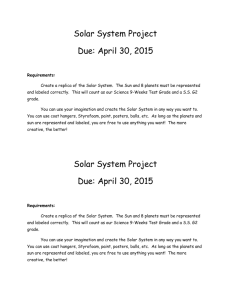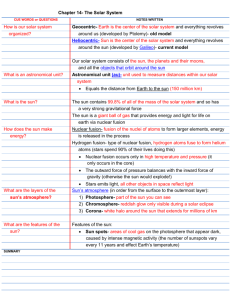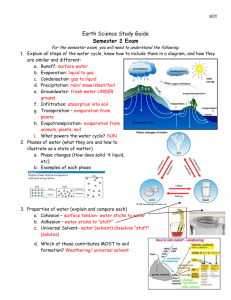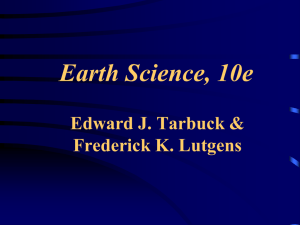Models of the Solar System
advertisement
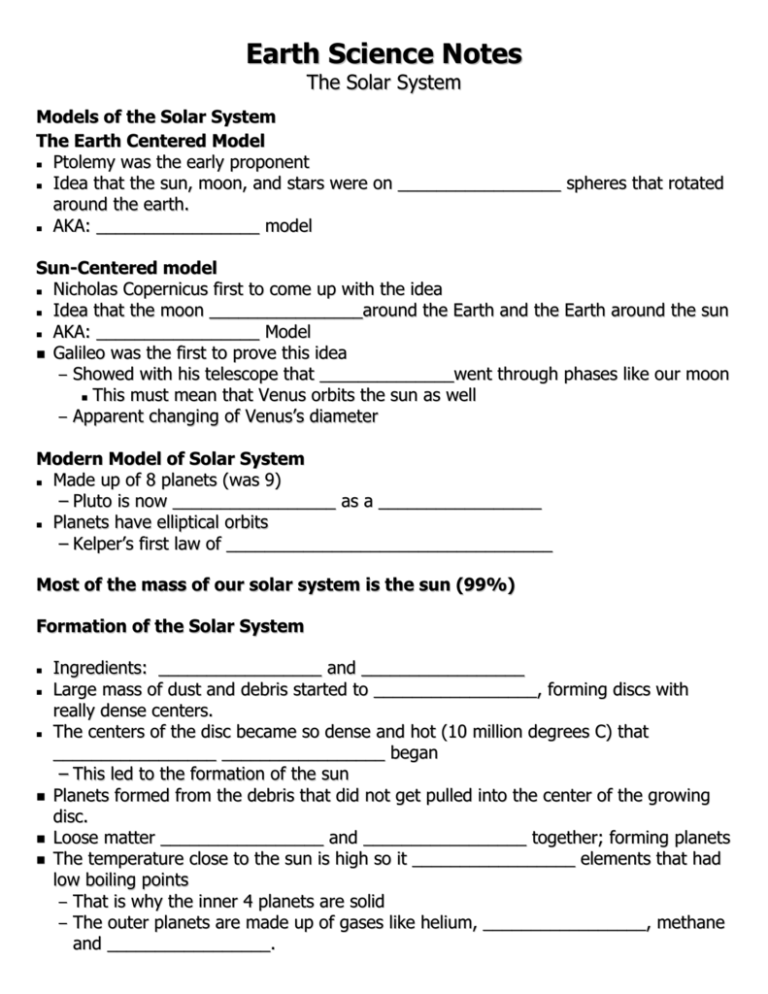
Earth Science Notes The Solar System Models of the Solar System The Earth Centered Model Ptolemy was the early proponent Idea that the sun, moon, and stars were on _________________ spheres that rotated around the earth. AKA: _________________ model Sun-Centered model Nicholas Copernicus first to come up with the idea Idea that the moon ________________around the Earth and the Earth around the sun AKA: _________________ Model Galileo was the first to prove this idea – Showed with his telescope that ______________went through phases like our moon This must mean that Venus orbits the sun as well – Apparent changing of Venus’s diameter Modern Model of Solar System Made up of 8 planets (was 9) – Pluto is now _________________ as a _________________ Planets have elliptical orbits – Kelper’s first law of __________________________________ Most of the mass of our solar system is the sun (99%) Formation of the Solar System Ingredients: _________________ and _________________ Large mass of dust and debris started to _________________, forming discs with really dense centers. The centers of the disc became so dense and hot (10 million degrees C) that _________________ _________________ began – This led to the formation of the sun Planets formed from the debris that did not get pulled into the center of the growing disc. Loose matter _________________ and _________________ together; forming planets The temperature close to the sun is high so it _________________ elements that had low boiling points – That is why the inner 4 planets are solid – The outer planets are made up of gases like helium, _________________, methane and _________________. Planet Formation Dust and grains begin to _________________ together. _________________ between larger and larger objects produce an _________________ -sized body. The growing body heats up and begins to melt. Dense molten metal particles pool together and sink towards the center of the body. Lighter silicate liquid, or magma, rises towards the surface, leaving denser solid minerals in the _________________ The result: a layered, or _________________, body with core, mantle, and crust. Other objects in the Solar System Comets Made of ______________, ______________, ______________, and other gases Comets in our Solar System Halley’s Comet – 1986 (76 y cyc) Comet Hale-Bopp Meteoroids, Meteors, Meteorites Meteoroids - _________________ of rock and debris Meteors – meteoroids that enter Earth’s atmosphere and _________________ Meteorites – meteors that _________________ Earth’s Surface o Barringer Crater in AZ, approx. 1.2 km (4000 ft) wide. o On June 30, 1908, a ball of fire exploded about 6 miles (10 kilometers) above the ground in the sparsely populated region, scientists say. The blast released 15 megatons of energy—about a thousand times that of the atomic bomb dropped on Hiroshima—and flattened 770 square miles (2,000 square kilometers) of forest. Asteroids Rock _________________ to materials that form the planets (leftovers) Most located in a belt between _________________ and _________________ It is thought at times in the past _________________ may have collided w/ Earth It is also thought that the path of an asteroid may cross the path of Earth in the future – In 2004, a newly discovered 320 m asteroid 99942 Apophis achieved the highest impact probability of any potentially dangerous object. The probability of collision on April 13, 2029 is estimated to be as high as 1 in 17 Summary Models of the solar system change with new evidence – Geocentric / heliocentric / modern view Formation of the solar system was dependent on gravity Sun utilizes nuclear fusion More than just the sun and planets in our solar system





